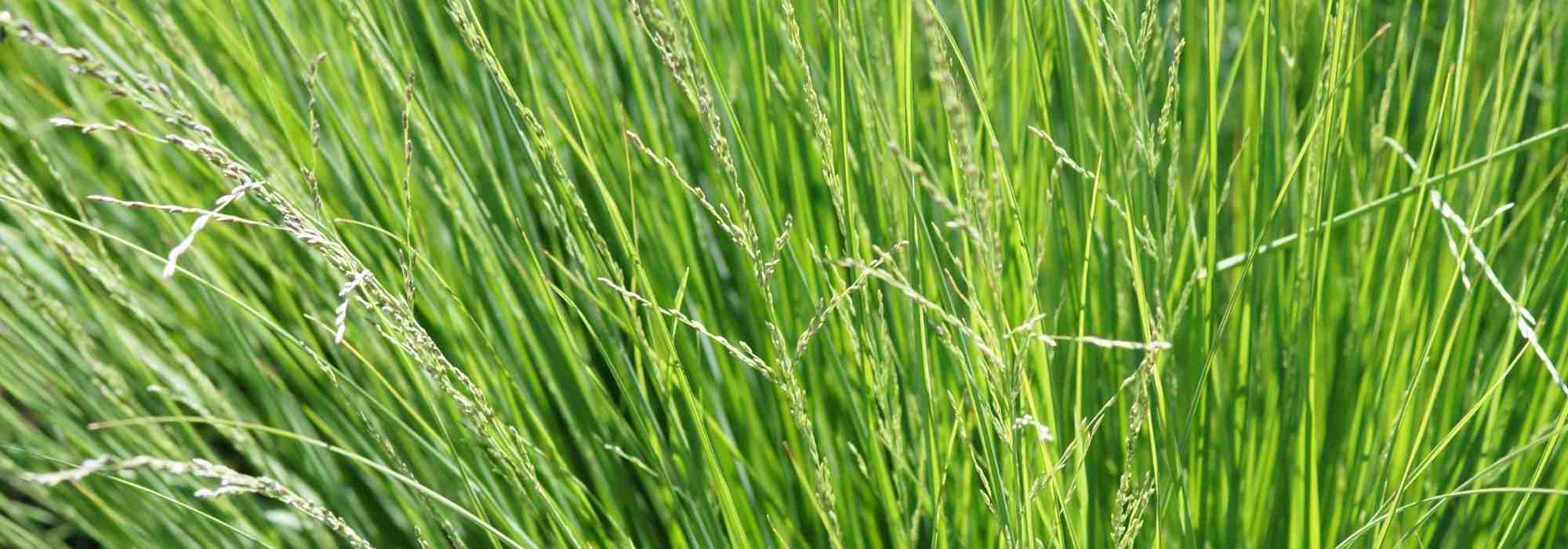
Sesleria: planting, cultivation, and care
Contents
The Sesleria in a nutshell
- This low-growing grass forms a beautiful, impeccable clump all year round that does not spread.
- It charms with its finely coloured evergreen foliage and delicate inflorescences in slender spikes.
- Attractive all year round, completely hardy, it adapts to a wide variety of soils.
- It thrives in full sun, partial shade, or even dry shade.
- It fits into natural or contemporary gardens, anywhere, even in pots.
The word from our expert
Discreet yet elegant in every season, the Sesleria is a small, evergreen grass that is interesting in many ways. It is appreciated for the fineness of its foliage, as seen in the Sesleria autumnalis, sometimes called Autumn Moor Grass, but also for its flowering in spring or summer, with slender, feathery spikes of greenish-white or silvery hues in the Sesleria argentea.
It forms a very dense, small clump, 30 to 70 cm in height, depending on the species and growing conditions. It is one of those low-growing grasses that remain beautiful throughout the harsh season and are non-invasive.
Hardy and unfazed by tough conditions, neither too tall nor too short, it grows everywhere, content with little. It thrives in sun or partial shade in rather dry, always well-drained soil.
With its natural elegance, it adds structure and volume to all gardens, from the wildest to the most contemporary, as a border for perennial beds, in a flower meadow, or even in a pot.
Choose from our collection of Seslerias the one that appeals to you—this perennial grass is at home in any garden!
Description and Botany
Botanical data
- Latin name Sesleria
- Family Poaceae
- Common name Sesleria
- Flowering May-June to October
- Height 0.30 to 0.70 m
- Exposure Sun, partial shade
- Soil type poor and well-draining
- Hardiness -15 °C and beyond
The Sesleria is a small species of low-growing perennial grass belonging to the Poaceae family. The genus includes 33 species native to mountainous regions or dry or wet meadows of central, eastern, and southeastern Europe, among which several are perennials, such as the Sesleria autumnalis, which flowers late in the season. Other species found in our gardens include Sesleria caerulea or blue moor grass, Sesleria argentea or silver moor grass, and Sesleria heufleriana, all of which are fully hardy, tolerant, and perfectly suited to all our climates.

Sesleria caerulea (left), botanical plate from 1903
This clump-forming grass, meaning it does not spread, creates a small herbaceous and bushy tuft reaching 30 to 70 cm in all directions when in flower. It establishes slowly but proves very long-lived once well-rooted. The habit is both bristly and somewhat loose, more or less spreading, always graceful and airy.
The fine foliage is evergreen, making this grass attractive even in winter. It consists of alternate, single, narrow, and linear leaves. Measuring 15 to 50 cm long and 2 to 7 mm wide, tapered and acute, they are folded into a “V” shape or marked by parallel veins. They display varied colours from one species to another, ranging from pale green, yellow-green, light green, to glaucous green or grey-blue.
The foliage is marcescent, drying but persisting in winter, taking on lovely muted tones.
From this gramineous vegetation, flowering emerges from May to August depending on the species and varieties. The autumn moor grass flowers in late summer and into October. This flowering takes the form of feathery, cylindrical, or elongated spikelets. These tubular floral spikes resemble fine brushes. They consist of greenish-white, white-greenish, silvery-white, or blue-black flowers. These light inflorescences remain elegant throughout the off-season, drying in autumn and often darkening as they fade.

Sesleria autumnalis and Sesleria heufleriana (© Andrey Zharkikh). On the right, Sesleria caerulea (© Wikimedia Commons-Stan Shebs)
Read also
9 grasses for dry soilMain species
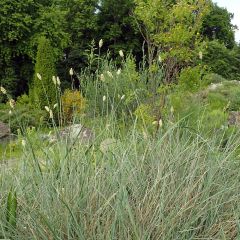
Sesleria argentea
- Flowering time June to September
- Height at maturity 60 cm
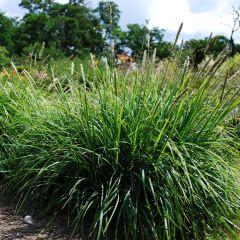
Sesleria autumnalis
- Flowering time September to November
- Height at maturity 40 cm
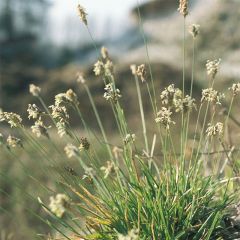
Sesleria caerulea
- Flowering time June to August
- Height at maturity 40 cm
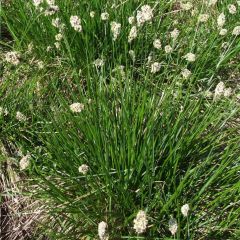
Sesleria heufleriana
- Flowering time June to August
- Height at maturity 40 cm
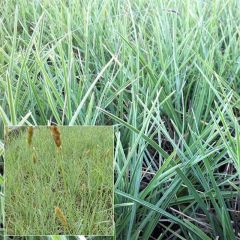
Sesleria nitida
- Flowering time June to August
- Height at maturity 70 cm
Discover other Sesleria
View all →Available in 2 sizes
Available in 1 sizes
Available in 2 sizes
Available in 1 sizes
Available in 2 sizes
Available in 2 sizes
Planting
Where to Plant It?
Perfectly hardy (sometimes down to -25°C in well-drained soil), Sesleria is a mountain native that thrives everywhere, in the north as well as the south of France, in lowlands as well as mountains, or by the sea.
Not being a demanding perennial, it will do well in almost all types of soil, from dry to moist, neutral to calcareous (except acidic soils), but especially well-drained in winter. It does not tolerate heavy, waterlogged soils that suffocate its roots. A rather dry soil will suit it perfectly. It adapts to poor, rocky soil. It thrives in full sun as well as partial shade.
This non-invasive plant fits into all gardens, in small spaces, along pathways, or to structure a natural area when planted en masse. It is also ideal for creating dry meadows in natural gardens or green roofs. Its delicate foliage adapts to any setting. In a contemporary-style garden, it will highlight all perspectives. It also serves as an excellent ground cover for challenging areas, even in shade. It also works well in flower pots or planters.
When to Plant It?
Planting Sesleria is best done in spring, from February to April, for quick establishment. Autumn planting, from September to November, is also possible. In any case, avoid planting during frost or extreme heat.
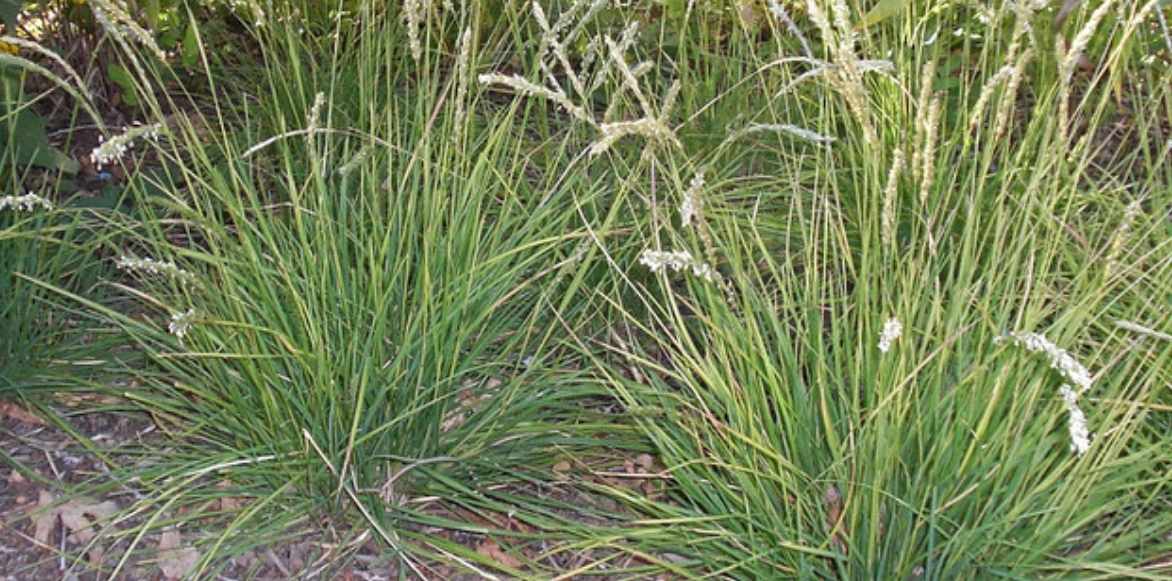
Sesleria automnalis (© Andrey Zharkikh)
In the Ground
Plan for 4 to 5 plants per square metre, spacing them 30 to 60 cm apart. It looks best when planted in groups of 5 to 10 plants for a striking mass effect or to create a light yet full pathway border.
It must be planted in well-draining soil that does not retain stagnant water in winter. In heavy soil, add a spadeful of gravel, some compost, or river sand, as this pretty little herb needs well-drained soil.
- Work the soil thoroughly to a good depth
- Plant in a hole 2 to 3 times the size of the bucket
- Loosen the excavated soil well
- Spread gravel or clay pebbles at the bottom of the hole to improve drainage
- Place the root ball in the centre of the hole
- Fill with garden soil mixed with 1/3 compost and coarse sand
- Firm down and water generously
In Pots
Ensure the substrate is very well-draining. Choose a container at least 50 cm in diameter with drainage holes at the bottom.
- Add a drainage layer
- Plant in a mix of 1/3 universal compost and 2/3 coarse sand
- Water
Read also
Grasses: which variety to choose?Maintenance, Pruning and Care
While Sesleria proves to be very undemanding once well-rooted, during the first year after planting, you will need to ensure it is watered regularly but not excessively, especially during periods of intense heat or prolonged dry weather. It requires more water if conditions are too dry. Once established, it will become more resilient to short periods of drought. In winter, it will make do with rainwater.
Mulching (with flax straw, dry leaves, etc.) at the base of the plant will reduce evaporation in summer and thus the need for watering.
A light application of organic fertiliser twice a year during the growing season, especially if the soil is very poor, will encourage growth.
In February-March, before the growing season resumes, trim the clump to 10 cm above the soil using hedge shears to make way for new foliage.
In pots
Plants grown in pots will need more water, particularly during very hot and windy weather. Repot as necessary, approximately every two years. You can opt for top-dressing once a year, replacing the old substrate with fresh compost to a depth of a few centimetres. There’s no need to store your pots in winter, but a sheltered spot away from winter rains is advisable.
Multiplication
Dividing clumps of Sesleria is an excellent way to perpetuate the plant. It is best done in spring, on a well-rooted plant, after 3 to 4 years of cultivation.
- Using a garden fork, gently lift the clump
- With a spade, divide the clump into 2 or 3 parts
- Select a few vigorous sections with sufficient roots
- Replant the sections immediately in well-prepared soil
- Water generously
Pair
The Sesleria is ideal for small or large sunny spaces, even in dry soil during summer. This little wild herb easily finds its place in a wild garden, as well as in the more refined setting of a contemporary garden and graphic garden, or in a dry or gravel garden.
In a dry rockery, it pairs well with other small grasses like the Festuca glauca ‘Golden Toupee’, thyme, autumn stonecrops, or small Helianthus.
The Sesleria can be planted along pathways. To complement it, consider other compact, non-spreading grasses such as the Pennisetum alopecuroides ‘Hameln’ or the Pennisetum alopecuroides ‘Cassian’.
In a naturalistic border, it will serve as a punctuation, alongside other summer-flowering perennials. Pair it with an Achillea filipendulina ‘Golden Plate’, lavenders, or asters. It helps to lighten the heavier flowering of perennials like coneflowers or Oriental poppies.
In a naturalistic scene, such as naturalistic meadows, you can pair it with other ornamental grasses like fountain grass, the Calamagrostis brachytricha or Diamond Grass, or the Stipa tenuifolia, together they will add texture and movement.
In a minimalist, contemporary setting, pair it with a Phyllostachys aureosulcata ‘Aureocaulis’, a very luminous bamboo variety, and a tall wild herb like the Panicum virgatum ‘Blue Darkness’, with its variegated purple-black and blue-green foliage.
→ Discover 7 more ideas for pairing with Seslerias
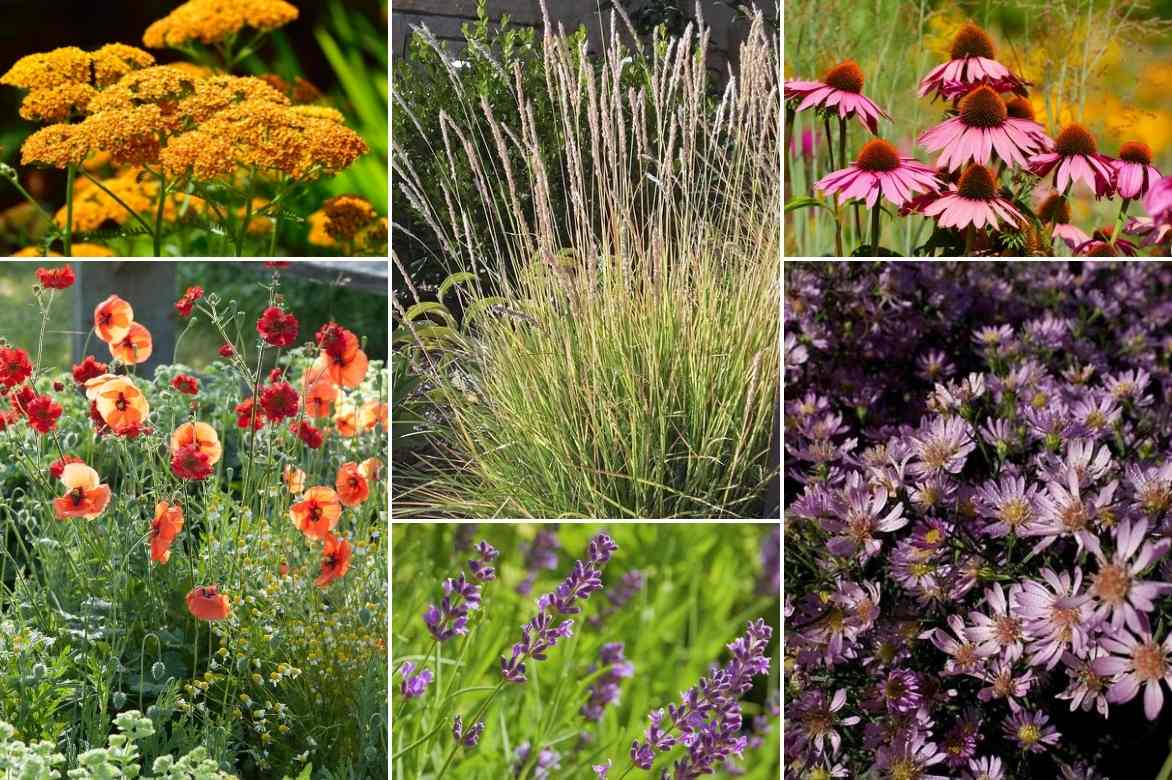
In the centre, Sesleria automnalis, accompanied by yarrows, poppies, lavenders, coneflowers, and Aster ericoides ‘Blue Wonder’
Useful resources
- To help you make your choice, also check out our guide “Ornamental Grasses: Which Variety to Choose?”
- Subscribe!
- Contents


































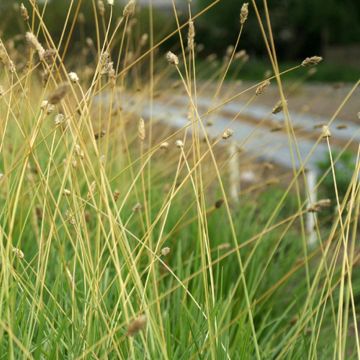


Comments